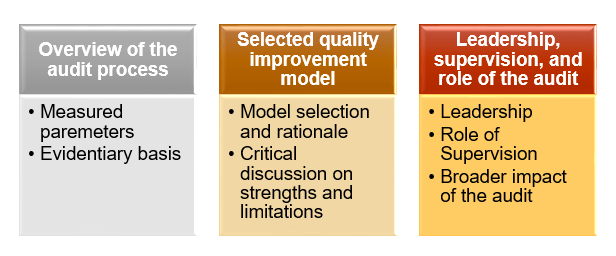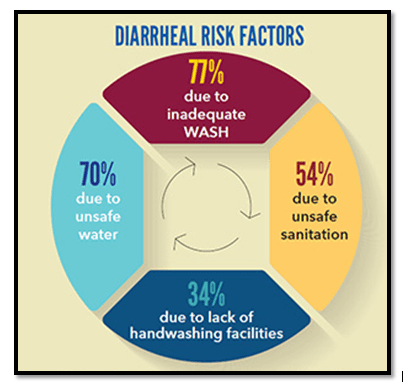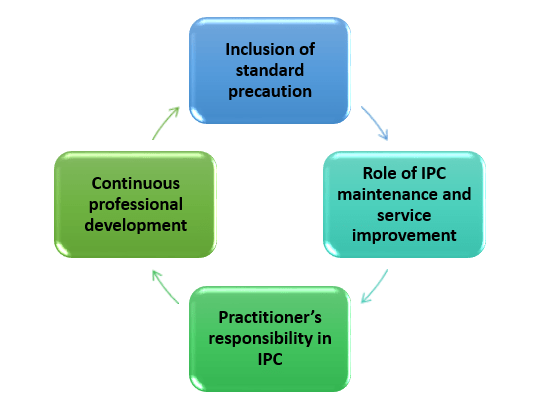+44 75754 30035 help@rapidassignmenthelp.co.uk
offer
🎁Special Offer 🎁 Discounts - Up to 55% OFF!
🎁Special Offer 🎁 Discounts - Up to 55% OFF!
In contemporary healthcare and social care settings, it is essential to engage in a continuous improvement process to ensure the delivery of high-quality services. This service improvement plan primarily concentrates on enhancing infection prevention and control (IPC) practices, which are crucial for safeguarding both healthcare practitioners and patients. The core objective is to systematically identify existing gaps and implement elevated measures in IPC within the designated workplace environment. A key focus of this plan involves evaluating infection prevention and control practices to establish a clearer understanding of current standards and areas needing improvement. By conducting thorough evaluations, organizations can identify deficiencies and reinforce best practices that contribute to safer and more effective care delivery. This approach not only supports compliance with regulatory expectations but also encourages the development of a proactive safety culture in healthcare and social care settings.
This improvement plan also aligns several learning outcomes to maintain a wide understanding and application of services in improvement and changed theories. Critical evaluation and increment of IPC can maintain the goals for the proper contribution of broader healthcare spectrum and social care excellence. The audit also served as a proper foundational element for this plan that includes a selected quality improvement model for evaluating current practices. This introduction also helps in maintaining the specific audit processes, evidentiary basis, and detailed measurement parameters for analysing chosen improvement tools. Other than that leadership and supervision has also been included for their significant roles in developing a culture of continuous improvement.
This report also recommends several actions for maintaining evidence-based strategies that can help create best practice guidelines for reputable organizations, such as the Center for Disease Control (CDC), World Health Organization (WHO), the National Institute for Health and Clinical Excellence (NICE), or The UK Health Security Agency. Through this comprehensive approach, the assignment can contribute to creating a culture of excellence in maintaining infection prevention and control and increasing the overall quality of care provided.
When navigating complex topics like infection prevention and control, students often search for the right assignment for help. Our platform offers expert support in analyzing audits, applying improvement models, and interpreting evidence-based practices, ensuring every assignment meets academic standards and boosts your overall understanding of healthcare protocols.
The audit process is mainly developed as the foundational element in this service improvement process for infection prevention and control. This methodology is employed in several workplaces for encompassing A comprehensive examination of key parameters.
The audit primarily focuses on maintaining a critical aspect such as personal protective equipment adherence, hygiene practices, compliance with several standard precautions, and environmental cleanliness (Who, 2021). Other than that, these parameters are also significant for strategic choosing that can provide a holistic evaluation of IPC practices within several specified contexts.

Figure 1: Audit development and model selection
(Source: Self-developed)
Control of evidence during the audit process is significant for maintaining the gold standard and creating best practice guidelines within the healthcare domain. It is also important to maintain a meticulous referenced process for establishing protocols and maintaining and improvising the guidelines for reputable organizations such as the CDC, WHO, and others. this mainly ensures a proper audit process that can reflect all the local standards with best global practices.
In infection prevention and control, there are several models and tools available in medical science that can help in creating proper routine however in this brush the Deming cycle or the plan do study act cycle has been selected as it can help maintain the quality improvement model with the audit process (Evans et al. 2021). This model is necessary for maintaining the nature that can be aligned through a seamless improvement process that aims to be installed in several IPC practices.
Strengths: The cyclic nature of the PDSA cycle has an iterative approach that allows for the creation of incremental adjustment and development based on several ongoing assessments (NHS, 2022). Other than that, it also involves several stakeholders and practitioners in the planned development and execution process that can promote a collaborative approach for organizations.
Limitations: Proper implementation of this cycle has several demands based on substantial resources both in the case of several organizational personnel and time that can cause resource-intensive processes (Islam et al. 2020). Other than that, this process mainly focuses on several iterative small changes that can overshadow the broader requirements in systematic reforms.
Get assistance from our PROFESSIONAL ASSIGNMENT WRITERS to receive 100% assured AI-free and high-quality documents on time, ensuring an A+ grade in all subjects.
However, according to Burnes, (2020), it is necessary to say that the choice of this cycle mainly aligns with Lewin’s change model, which can emphasize the significance of the iterative cycle in stakeholder involvement and help in achieving long-lasting changes.
Effective leadership is important in developing a culture that can value IPC several organizational leaders mainly serve as the role model in creating the tool for including best practices. It can develop the environment for improving care measures for maintaining encouraged processes and reputation.
Supervision mainly works as the process that helps the leaders to monitor daily practices (Lowe et al. 2021). It has regular target maintenance that can ensure that the process of giving and receiving feedback, support, and training is properly continuing and reinforces the process that includes IPC standards.
Beyond the immediate evaluation, the audit is also helpful in understanding powerful catalysts that can help organizational changes other than that properly mentioning the areas for improvement the audit can monitor supervision and leadership to create strategic actions that can help in maintaining organizational improvement towards IPC practices.
Impact prevention and control within social care and healthcare settings are mainly monitored by several fundamental principles and practices that have the major objective of minimizing the risk of transmission of several infectious agents. Critical appraisal is also necessary for maintaining several intricacies that require a proper understanding of effective care while safeguarding the practitioners and the patients.
Standard precautions are the pillars of IPC that create a set of infection prevention practices that have been included in all patient care services (NHS, 2022). These precautions help in maintaining healthcare status for every individual power potential infection management.
However, the adoption of standard precautions mainly includes the use of personal protective equipment, hand hygiene, safe injection practices, and maintaining respiratory hygiene that can be demonstrated as a proper commitment to universal safety. Hand hygiene is one of the simplest and most significant practices that is necessary for minimizing the risk of healthcare-associated infection (Powell-Jackson et al. 2020). However successful implementation of different standard precautions continuously creates a Necessary understanding of healthcare professionals that can highlight the importance of ongoing reinforcement and education processes.
Core areas for improvement
The audit mainly identified several areas for improvement such as the hand hygiene process and utilization of PPE kits. These findings have been underpinned by the requirement of maintaining targeted intervention for addressing specific aspects of IPC.
Literature appraisal
Literature review on IPC mainly supports creating a centralized process for hand hygiene and creating appropriate use of PPE in minimizing the spread of infection other than that several studies also indicate that hand hygiene significance loss mainly contributes to creating healthcare-associated infections that can increase the critical role of regular training, feedback mechanism, and reminder. Other than that proper use of PPE (Davis et al. 2020). It also creates a significant barrier against the transmission of infectious agents that requires the availability of a correct utilization process.
Evaluating personnel practices mainly helps in understanding the standards of precautions, identifying the areas for improvement, and recognizing the strengths of these processes. Proper reflection also helps in developing a culture of self-awareness and accountability (Jessop et al. 2020). It is also important to understand that the registered practitioner is mainly aligned with personal practices for standard precaution that is necessary for creating hand hygiene protocols and proper use of PPE kits that is necessary for maintaining the improvement in the IPC segment more responsibly.
the audit is mainly connected with healthcare settings that are crucial for maintaining infection prevention and control. This can identify proper areas for improvement and create comprehensive assessments for specific strategy development and targeted intervention.

Figure 2: Infectious disease outbreak collaborators
(Source: CDC, 2020)
One of the significant findings indicates the suboptimal application of hand hygiene compliance based on several healthcare practitioners. Therefore, cases of incomplete hand washing, several hand washing techniques, and inadequate use of hand sanitizer have been noted during the audit. Extensive literature also helps in finding out the importance of hand hygiene in reducing the transmission of infectious agents. Several noncompliance processes with hand hygiene protocols have been associated and included with an increased risk of healthcare-associated infection (World Health Organization, 2021). This literature also focuses on creating the requirement for continuous education to maintain organizational culture.
Other than hand hygiene the audit also highlighted several issues in the appropriate utilization of PPE kits that can create inconsistency in maintaining several processes such as doffing and donning, improper disposal, and maintaining the variable selection of PPE based on the risk level.
Effective use of PPE is necessary for maintaining IPC measures. Several kinds of literature also help in understanding the utilization of PPE kits in case of both patient and practitioner’s safety (Tian et al. 2020). Proper training and continuous education are necessary for ensuring the consciousness of healthcare professionals can help maintain the appropriate use of PPE other than that it is also important in maintaining proper application and disposal of these kits.
The examination of environmental cleanliness is also necessary for maintaining the standard of hygiene practices which can include insufficient cleanliness on high-touch surfaces and inadequate waste management reserves other than that maintenance lapses are also included in this process. Are clear and clean hygienic environment being significant for preventing infection spread (Liu et al. 2020). Literatures emphasize understanding several cleaning protocols, staff training, and regular audits in maintaining a sanitary healthcare environment it is interconnected with the processes of IPC for addressing several challenges including with multifaceted approach involving process improvement and educational development.
In the context of infection prevention and control proper assessment of personnel practices is necessary for every registered practitioner. It is also important to understand individual practices and their alignment with established guidelines or standards for contributing to creating a culture of continuous improvement.

Figure 3: Area of practice in IPC
(Source: self-developed)
A registered practitioner within several specific areas of practice such as intensive care units, and outpatient clinics needs to maintain the precautions more carefully including consistent hand hygiene processes proper use of PPE kits, and the importance of IPC protocols. This can be reflected in understanding personal practices for strengthening these principles (Mahmood et al. 2020). These are also important for maintaining IPC protocols in high-risk situations that can be demonstrated as proper dedication to patient and personal safety.
However, self-awareness is crucial for finding out the areas for improvement. This helps understand hand hygiene practices that are useful in maintaining proper interaction in the utilization of appropriate and rigorous based on established guidelines
In the current situation, a proper contribution for IPC is to demonstrate through daily practices for maintaining standard precautions. This also includes effective understanding in education and training sessions for determining knowledge on IPC measures for practitioners and colleagues to understand the importance of compliance in daily Processes and team meetings.
However, in this case the organizations are facing several challenges that are creating obstacles for growth (Hegde, 2020). These challenges mainly involve time constraints and waste management measures that are creating environmental delays and challenging for the organization to adhere to strict principles for IPC protocols.
As a registered practitioner it is necessary to advocate several IPC standards is important. Other than that safety management and active participation in different improvement initiatives is necessary for long-term development in IPC practices.
In this process, effective communication and collaboration with several colleagues and patients are necessary for maintaining health and hygiene principles (Chisholm et al. 2021). this mainly involves a knowledge-sharing process for active engagement in discussion for collective findings and management of challenges for addressing the gaps in several IPC practices.
Engaging in reflective practice mainly helps in the continuous evaluation of personal understanding of IPC standards. It also helps regulate the self-assessment process for proper openness to feedback and continuous development that can ensure alignment with evolving practices (al-Sulbi et al. 2023). Active participation in internal and external audits is necessary. It involves properly complying with audit requirements and active contribution insights that identify the area for improvement and collaborate with colleagues and patients to implement recommended changes.
As a registered practitioner within the realm of infection prevention and control, it is necessary to understand the responsibilities and develop them according to proper guidelines (Mahmood et al. 2020). This section focuses on several multifaceted understandings that play a significant role in supporting service improvement initiatives.
I registered practitioner serves as a role model for colleagues in consistent adherence to IPC-based practices. This can demonstrate proper health and hand hygiene utilization of PPE kits and strict implementation of established protocols that are necessary for creating high standards and developing a culture of safety within healthcare settings.
Mainly involves engaging in providing education to students, discussion, and emphasizing high quality care-providing process of IPC (Beasley et al. 2020). Advocacy also extends beyond personal practices for understanding wide changes in the continuous development of IPC.
A registered practitioner is a significant person for creating team dynamics and motivating team players for collaboration. Active collaboration is necessary for participating in facing challenges and discussing the updates in this segment. It also facilitates open communication to create better relationships in maintaining increased IPC standards.
By taking part in these initiatives practitioners can be helpful in quality management projects and demonstrate commitment towards enhancing the safety of patients (Ilyas et al. 2020). It can also be involved in contributing proper insight for frontline activities and implementing recommended changes.
A rule of practitioner also includes dissemination of knowledge on IPC principles. This mainly involves the activities in participating or leading educational sessions that share evidence-based resources and contribute to a continuous learning culture within the teens.
Other than that, mentoring less experienced college students in this process is a necessary contribution (Singh et al. 2022). This can provide proper guidance to the students for maintaining protocols offer a constructive feedback-sharing process and help in the professional development of the team in maintaining the commitment to create high standards for IPC.
Based on the comprehensive audit findings it is necessary to evaluate personal practices and the following recommendations have been proposed for continuous enhancement in infection prevention and control. These recommendations mainly align with several best practice guidelines from reputable organizations such as the World Health Organization, the Centre for Disease Control, and the National Institute for Health and Clinical Excellence.
Recommendation 1: Strengthening hand hygiene programs
According to the given identified gap hand hygiene compliance is necessary for maintaining reinforcement in hand hygiene programs. As per the recommendation, it is necessary to conduct regular and targeted training sessions on proper hand hygiene techniques (Beasley et al. 2020). It is necessary to implement visual cues and reminders in maintaining strategic locations for prompt practitioners. Other than that proper introduction to real-time feedback mechanisms, such as electronic monitoring systems direct observation, and several others can enhance accountability.
Recommendation 2: Personal Protective Equipment utilization training
Inconsistency in utilizing PPE kits is one of the major setbacks for professionals in ensuring correct application and disposal. Therefore, organizations need to develop and deliver comprehensive training programs for PPE utilization that can address proper donning and doffing procedures (Chisholm et al. 2021). It also established the compliance checking process for maintaining quick reference for practitioners. It also helped in conducting regular simulations or proper drills for reinforcing correct PPE utilization in different scenarios.
Recommendation 3: Robust development in environmental cleanliness protocols
Suboptimal environmental cleanliness is a significant risk for both patients and practitioners that needs proper focus on increasing cleaning protocols. In this process implementation of a routine environmental cleaning schedule is necessary for a clear responsibility definition (Singh et al. 2020). organizations can provide ongoing education to the cleaning staff for a significant understanding of infection prevention and introduce regular Environmental audits to maintain proper compliance with cleanliness standards and waste management.
Recommendation 4: Development of a culture for continuous improvement
The audit mainly indicates several variations in overall compliance with standard development that highlight a requirement for cultural embarrassment in the continuous development process. In this case, the organizations need to establish a multidisciplinary quality management team that is focused on IPC (CDC, 2020). Organizations need to motivate practitioners to actively participate in regular audits and create constructive feedback. It is necessary to celebrate the improvements and successes of creating a positive culture based on practitioner and patient safety.
Recommendation 5: Strengthening supervision and leadership
Effective supervision and leadership are significant for developing an environment for the continuous development of IPC practices fully in this case proper improvement and development of leadership training campaigns are necessary for settling IPC standards. Poster a channel for open communication between frontline practitioners and leaders can address proper challenges (al-Sulbi et al. 2023). Other than that, it is also important for the supervisor to receive specific training on IPC supervision that can focus on the importance of regular support and feedback.
Recommendation 6: Continuous review and revision of IPC policies
Implementing IPC policies and their effectiveness in the current situation regular revision and review are essential. Therefore, establishment of a regular schedule is necessary that consider proper updates from authoritative bodies. Creating feedback mechanisms from practitioners during policy reviews is necessary to include and incorporate frontline perspectives (Ilyas et al. 2020). Proper communication policies are necessary to create changes through training sessions and updated routine materials.
Conclusion
In conclusion, it is important to understand that this service improvement plan is a comprehensive understanding of infection prevention and control guided by thorough audit and proper critical appraisal. The findings have been underscored for developing targeted interventions for addressing the gaps in personal protective equipment utilization, hand hygiene, and maintaining environmental cleanliness. The proper role of registered practitioners is necessary for identifying through external practice evaluation that can highlight the importance of individual leadership and commitment in maintaining IPC standards. Other than that, the recommendation is also important for maintaining the practices and creating objectives to develop a bridge between the identified gaps that can create satisfaction and development in IPC standards. Proper implementation of these recommendations helps in collaboration and effort to recognize the dynamic process in the evolving field of IPC. Through the cyclical process of evaluation, audit, and improvement this report can help maintain and aspire to the culture for excellence in IPC that develops a more effective and safer healthcare service environment.
References
Introduction: Introduction To People Management Get free samples written by our Top-Notch subject experts for taking Assignment...View and Download
Introduction: How Business Can Benefit From Sustainable Business Practices Get free samples written by our Top-Notch...View and Download
Introduction - Therapeutic Communication in Mental Health Nursing Get free samples written by our Top-Notch subject experts for...View and Download
Introduction The growth of systems reliant on digital systems makes it necessary to employ strong methods to safeguard the...View and Download
Introduction to Report on Personal Development A student's approach to learning is referred to as their academic talents or...View and Download
Introduction to Inquiry In Health And Social Care Financial Management and Decision Making refers here metaphorically to the...View and Download
